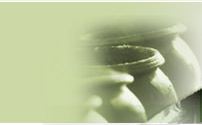

|
| Research and development |
Introduction
The Institute is taking steps to strengthen its research activities, working alongside the physicians at the Barberyn Resorts. Some of the activities are elaborated below
a) Comprehensive Electronic Medicinal Plant Catalogue
Medicinal plant extracts form the basis of Ayurveda medicine and treatment. Up to now how ever there is no comprehensive directory of medicinal plants in Sri Lanka
The Institute of Ayurveda (IAAM) in conjunction with the Ruhuna University, Department of Botany and the Barberyn Ayurveda Resorts initiated the preparation of a searchable electronic data base and a Medicinal Plant Web site which would contain details of THE MEDICINAL PLANTS IN SRILANKA which are most commonly used in Ayurveda medicine.
The list consists of around 1635 plants, and the steps in preparing the web involved the following tasks:
1. MAKING A LIST OF MEDICINAL PLANTS
Choosing the most commonly used medicinal plants of Sri Lanka and finding their scientific names, the families they belong to, and their common English names along with their Sinhala names from various books and databases. Finding the English names was a very time consuming task as most plants did not have English names designated to them or, they were not readily available in the standard texts. This will be an on-going project for a considerable time. The list of plants was arranged in alphabetical order according to their family names.
2. GIVING MEDICINAL PLANTS A 'STATUS'
Next step was to give these plants a "status" (ie, endemic, native, naturalised exotic, only under cultivation] for each species. For this purpose, the information on flowering plants in Sri Lanka had to be checked with great care.
3. CHECKING THE EDIBLE NATURE OF PLANTS
On completion of the above, we checked on the edible nature [or species with edible parts] of each species of these medicinal plants. As there is no written literature to get this information, the Professor of Botany of the Ruhuna University based it on his knowledge of 'ethno-botany' in Sri Lanka to achieve this task.
b) Ayurveda Conferences
3rd International Conference on Medicinal Plants and Herbal Products (ICMPHP) 2011
Date: 19th to 24th December 2011
Venue: The Institute of Indigenous Medicine, University of Colombo
The Institute of Ayurveda and Alternative Medicine (IAAM) supported the Conference both substantially and financially through an exhibition of medicinal plants of Sri Lanka and providing about 10000 lunch packets for the students and staff who were organizing the Conference. two stalls, Barberyn Ayurveda Resorts and The Institute of Ayurveda and Alternative Medicine (IAAM). The stalls projected the theme Medicinal Plants and Herbal products. Rare species of medicinal plants were displayed in the stall which was highly attractive. Traditional Ayurveda practitioners including Barberyn's indigenous "medicine manexplained the plants to many of the visitors who were interested in learning the properties. The PPT on herbs and their Ayurvedic values showed at the stall was highly commended by many of the industry experts for been a novel and a very educative initiative. Samples of herbal raw material were also displayed in the stall alongside a variety of herbal products and oils that Barberyn produces in conjunction with the IAAM
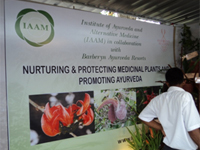
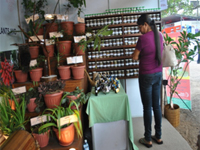
National Ayurveda Research Conference 2012
Date: 20th January 2012
Venue: Bandaranaike Memorial Ayurveda Research Institute, Nawinna, Sri Lanka
The conference was jointly organized by the Bandaranaike Memorial Ayurveda Research Institute (BMARI) and the Ministry of Indigenous Medicine in Sri Lanka. This was the first National conference on Ayurveda Research in Sri Lanka was to be a stepping stone to the International Ayurveda Research Conference which is to take place mid 2012 and also to provide meaningful opportunity to pursue a new role and a vision of traditional medicine that will improve healthcare. The conference was themed under "Indigenous Medicine Based Health Care System for Sri Lanka"
Research papers were called for oral and poster presentations under 15 categories, which were
- Socio-legal aspects of Indigenous Medicine Based Health Care System for Sri Lanka
- Ayurveda Medicine and Culture
- Child Health
- Community Health
- Women Health
- Current Status of Pharmaceutical Industry in Traditional Medicine
- Emerging knowledge in Indigenous Medicine
- Environment and Traditional Medicine
- Evidence-Based Medicine
- Indigenous Medicine in curing non-communicable diseases
- Medical Cosmetics
- Obesity
- Medicinal Plants; Cultivation, Utilization and Quality
- Safety and Drug Abuse
- Standardization of Ayurveda Medicine
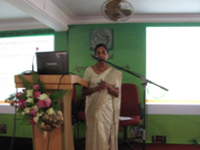
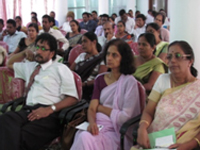
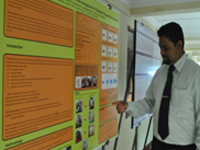
Research papers submitted by the IAAM was accepted for presentation at plenary and posters.
1) Effect of Environmental factors on Human Health: presented by Ms.Geetha Karandawala
This research was based on a survey conducted at the Barberyn Ayurveda Resort and was based on the identification of 3 main factors that directly affect o health which are
- Ahara - Diet related
- Viharana - Life style related
- Sadvritta - Psycho spiritual practices
Ms. Karandawala then explained how and what the Ayurveda Lifestyle is and what it contains in terms of
- Dina Charya - Daily Regime
- Ritu Charya - Seasonal alteration to the daily regime
- Sadvritta - Moral and spiritual conduct related to general social living
Further she elaborated how we can adopt it to suit our daily lifestyle so that we minimize the negative impacts identified in the research. She concluded the session stating the that Barberyn in collaboration with The Institute of Ayurveda and Alternative Medicine (IAAM) would like to expand this research to the rest of the country, utilize the findings to advice the guests as well as extend the collaboration to the field to engage in further research to reintroduce the ancient wisdom of Ayurveda medicine in the health care system of Sri Lanka.
Click here to download Presentation
2) Assessment of clinical efficacy of "T6 Oil" in the management of "Padadari" (Cracked Feet) condition - presented by Dr. Mangala Kumara
Dr.Mangala Kumara conducted a poster presentation based on the joint research he has done with a team to assess how a specific oil is efficiently used to combat the condition of cracked feet. He stated that chronic illness such as diabetes, thyroid disease, psoriasis or eczema, and athlete's feet are the main medical reasons for cracked feet. Further, nutritional deficiency in vitamin A, zinc or omega-3 fatty acids and chronic dehydration contribute to it.
It had become an issue during the aging process widely seen amongst the senior citizens and also the in cases where employment requires long hours of standing, walking specially on hard flooring. Being overweight , ladies flip flops lacking side support to feet increases the possibility of of the condition. Ayurveda describes that this condition occurs due to aggravation of Vata, Pitta and Raktha doshas.
Results were analyzed by using percentage improvement using 30 patients of either sex age between 10-60years having signs and symptoms of cracked feet condition been selected and oral medicine, oils given.T6 oil and Pinda oil given separately with and without oral medications for 21 days.
Click here to download Presentation